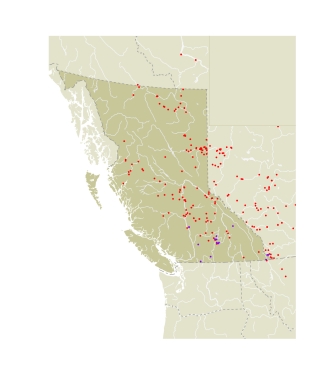The name Limenitis is derived from the Greek limenitis (harbour keeping), an epithet applied to deities who protected harbours. Fabricius may have derived the name from the fact that the first specimen of an admiral came from the harbour town of Leghorn (Emmet 1991). More probably, however, it is derived from the male's defence of a territory based on a favourite perch site, analogous to an admiral protecting a harbour. The common name "admiral" may refer to one function of an admiral being to protect harbour towns, in much the same way as the male butterflies protect a favourite perch site. Since the common name pre-dated the Latin name, the Latin name may be derived from the common name. Holland (1898) first used the common name "white admirals" for the genus.
Admirals in BC are black with a broad white band across the upperside of the wings, except for the Viceroy, which is orange brown with black markings. Admirals are medium-sized to large butterflies. They are strong, fast fliers, but can usually be observed while perching and slowly patrolling their territories.
All the admiral species hybridize in nature where their distributions overlap, and hybrids between Lorquin's Admirals and White Admirals are common in southern BC. During mating of all species in this genus, it is usual for the males to exhibit mid-valval flexion of the genitalia. Both valves can be seen to flex inward, perhaps stimulating the female (Platt 1979).
The generic name Basilarchia has been used by some authors for the admirals in BC. There are no significant structural differences in adults or larvae between Limenitis and Basilarchia (Layberry et al. 1998), hence we treat Basilarchia as a synonym of Limenitis. There are about
50 species of Limenitis worldwide.
|
|
